Urkesh and the Hurrians
The "Outer Fertile Crescent"
Ideological landscapes of the Third Millennium
The Hurrian urban ledge
At the boundary of the empire
A vassal kingdom
Back to Urkesh Overview
The "Outer Fertile Crescent"The populations of the northern highlands shared many traits of material culture and of ideology. We refer to this region as the Outer Fertile Crescent, because it overarches the region traditionally known as Fertile Crescent.In the third millennium, they are known as Early Trans-Caucasian in terms of the archeological record. We now think that there was an ethnic bond that united these populations. From later evidence, we think that they identified themselves as Hurrians. Back to top |
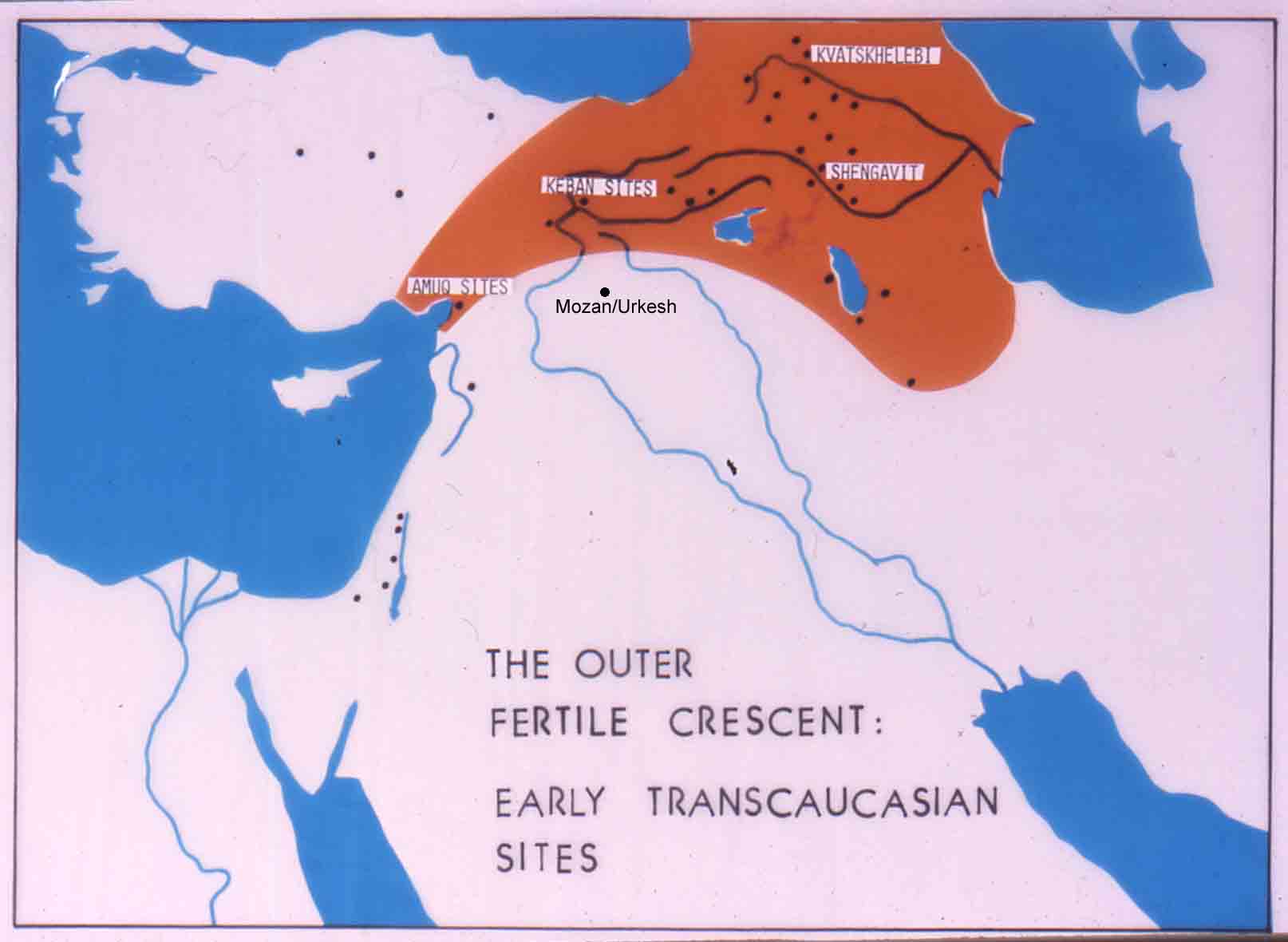
|
Ideological landscapes
It is a curious phenomenon that the myths and epics of southern Mesopotamia (Sumerian and Akkadian) show a sharp and diffused awareness of the extra-Mesopotamian landscapes to the east, the south and the west, but not to the north – which is wholly absent. |
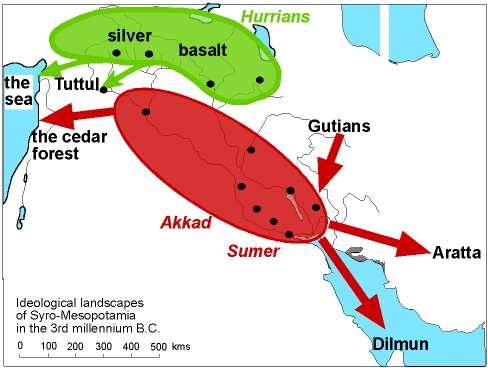
|
The Hurrian "urban ledge"While important and autonomous, the Hurrian urban culture was not represented by a large number of cities. Only a small number can be so considered, and they seem to have been found only along the narrow strip along the piedmont of the Taurus range (shown in green on the map). As of now, Urkesh is the only city that can demonstrably be shown to have been Hurrian in the third millennium.Nawar was (arguably) the name of the territory of the kingdom of Urkesh, that included the mountainous hinterland to the north. There is no evidence that Urkesh ever developed into anything larger than a city-state, however extensive its hinterland and powerful its culture. Back to top |
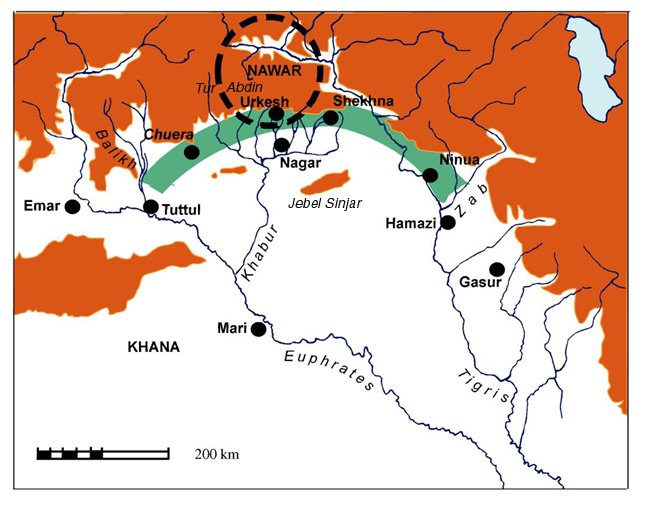
|
At the boundary of the empireThe Akkadian expansion threatened to engulf Urkesh as the empire established military and administrative control a few kilometers south of Urkesh, at ancient Nagar. But there is no evidence that Urkesh was conquered. Rather is seems (arguably) that the daughter of the most powerful Akkadian king, Naram-Sin, was married to the king of Urkesh. Such dynastic alliance was probably influenced by the fact that normal Akkdian administrative controls could not easily be imposed on the mountainous hinterland: as a result, an alliance seemed more realistic than a conquest of the capital city, Urkesh – however easy such a conquest might have been, in military terms.Back to top |
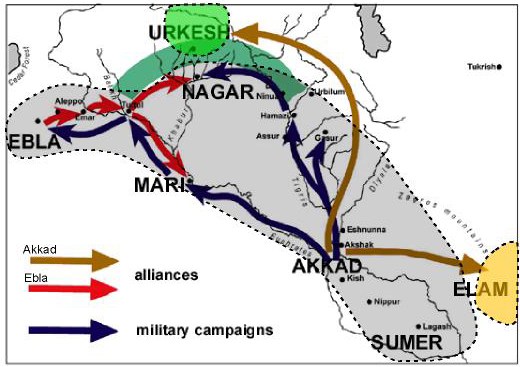
|
A vassal kingdomIn the early second millennium, Hurrian influence is still visible in the material culture, but political control passes in the hands of the Amorite kings of Mari. They had established a large macro-regional state in the north, and installed their own man in Urkesh, with an Amorite name, as their vassal king. The local inhabitants did not take kindly to this intrusion, and letters found at Mari give evidence of their strong resistance. In one letter, the king writes to his vassal the man of Urkesh as follows: “I did not know that the sons of your city hate you on my account. But you are mine, even if the city of Urkesh is not.”Back to top |
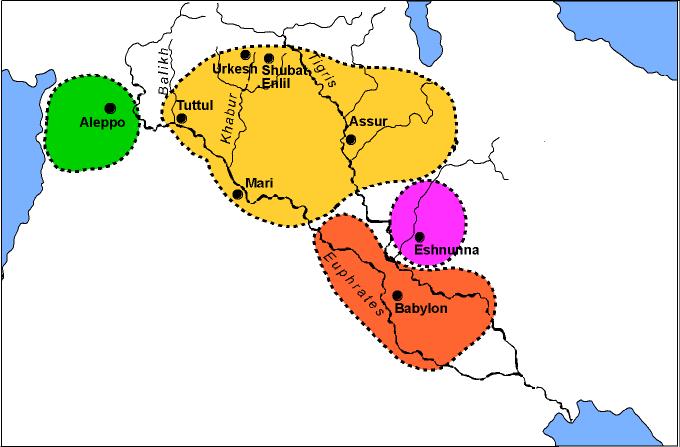
|